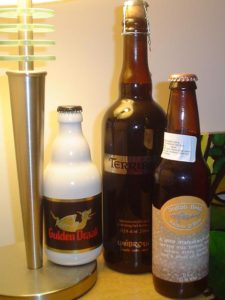So now that Technorati is tagging allowing for the indexing of the web, shouldn’t categories broadcast the same system of tags? I was going to put a referral tag into my Regiopolis post below and then I realized that my post had now text and each photo was already a link. I categorize such posts under “Kingston” so shouldn’t that category broadcast its Kingston-ness? Thankful I am to the masters that be of this my blog as that category already has an RSS link and maybe this is already solved in that sense. It would be nice if that RSS were able to be directed to Technorati or my public centralized aggregator of choice so that it automatically was picked up along with all other posters of posts with that same tag.
Concurrent to this, it seems to me, will be the responsibility to ensure that your categories make sense. “Stuff I Like” might be one of the less useful categories…but as long as the automated aggregation could be turned on or only could be broadcast to a sensible taxonomy such as wikipedia has organically created the inspecific or unspecified categories would not be an issue.
Oh, to be a boy again and have all the smarts it would take to create a “rel-” tag based aggregatron from which I could sell tasteful yet lucrative advertising.
Further: Shouldn’t this be as easy as those broadcasting tags stores are introducing as described at wikipedia?
Radio frequency identification (RFID) is a method of remotely storing and retrieving data using devices called RFID tags. An RFID tag is a small object, such as an adhesive sticker, that can be attached to or incorporated into a product. RFID tags contain antennas to enable them to receive and respond to radio-frequency queries from an RFID transceiver.


 Today’s
Today’s